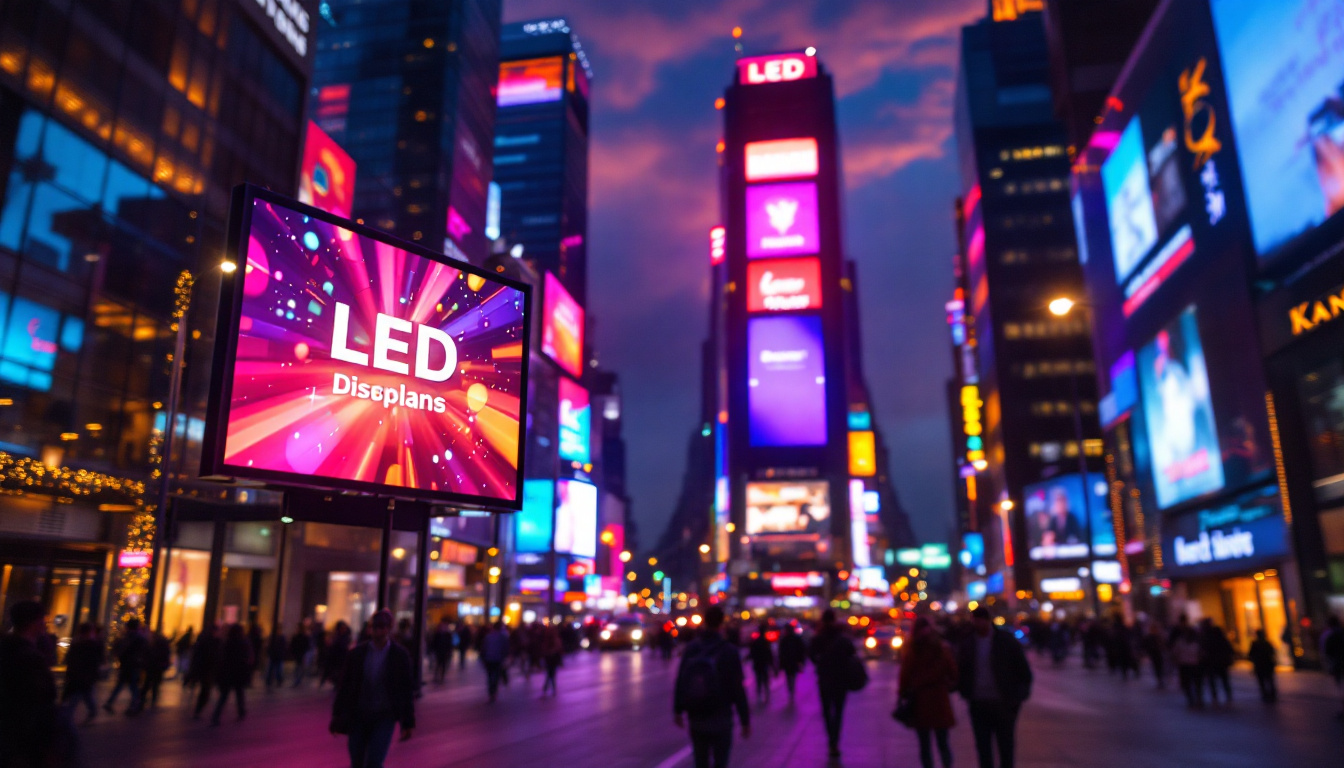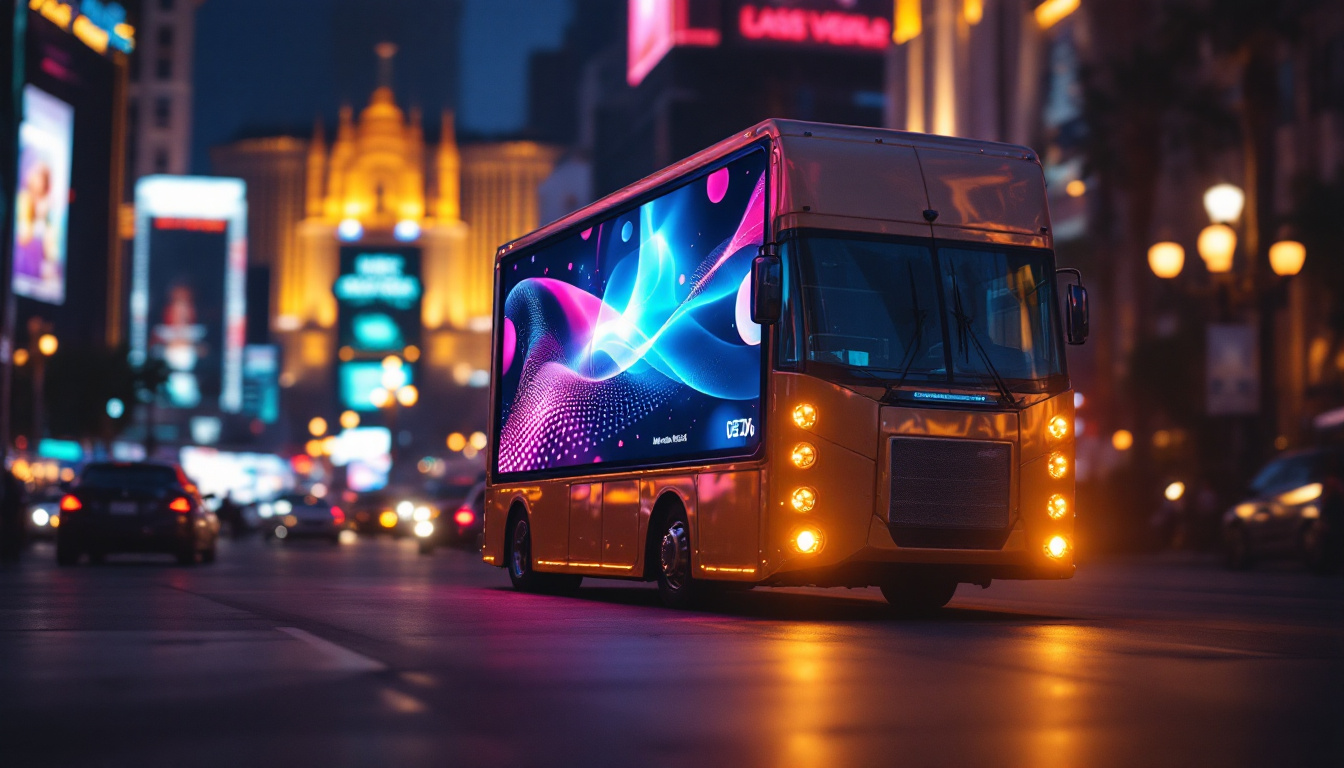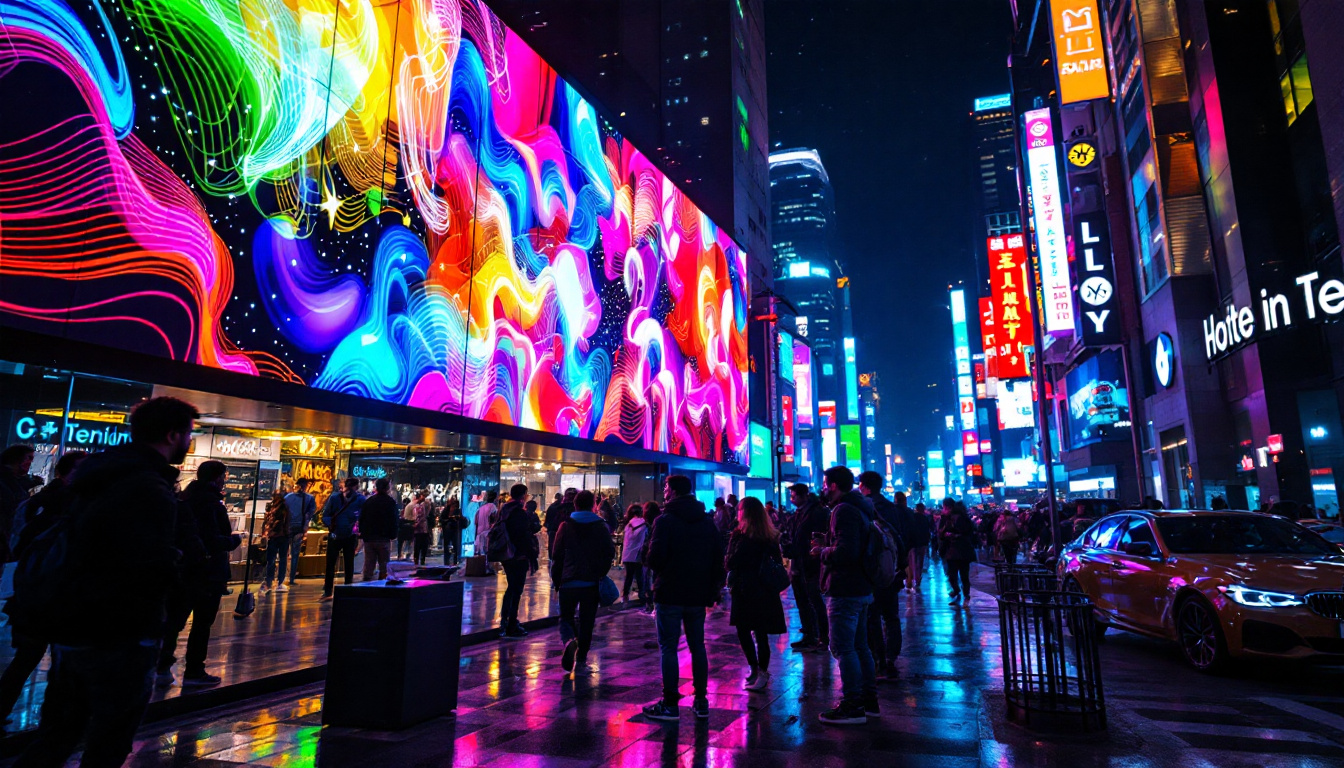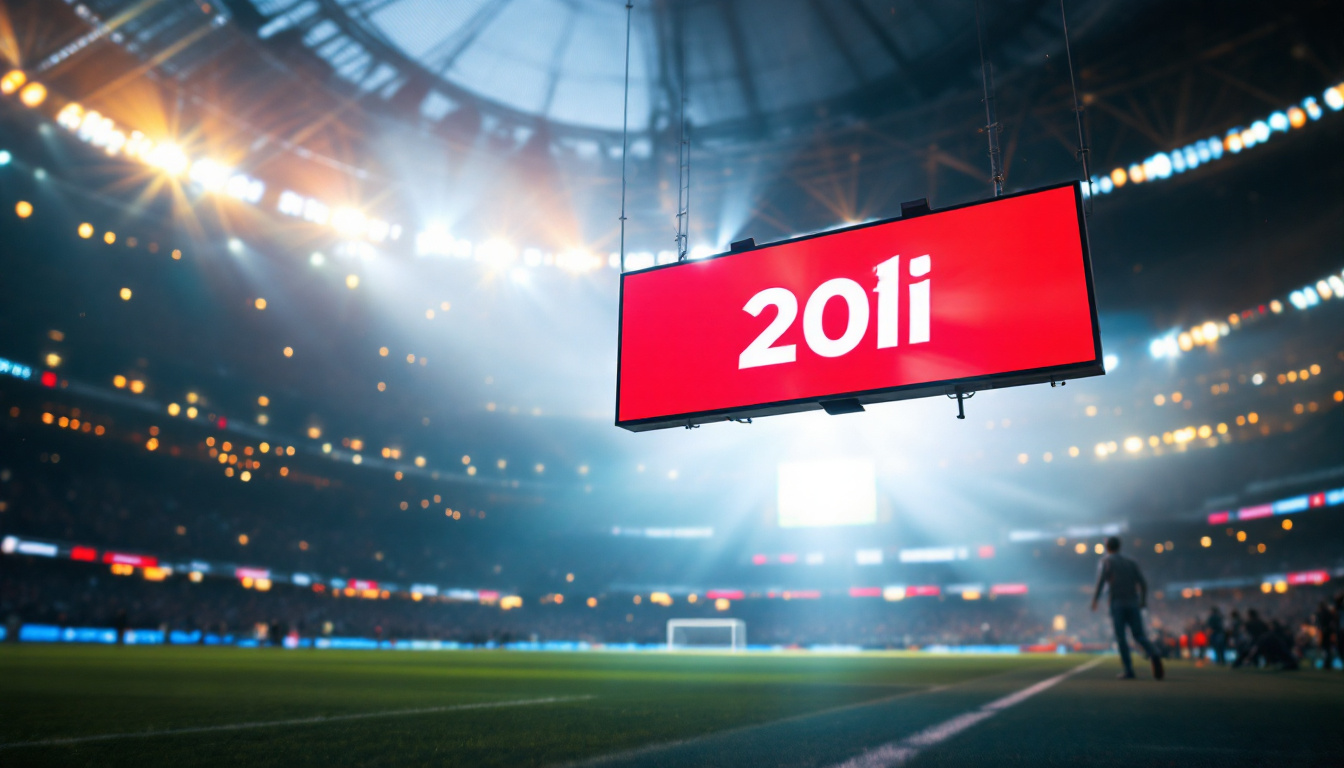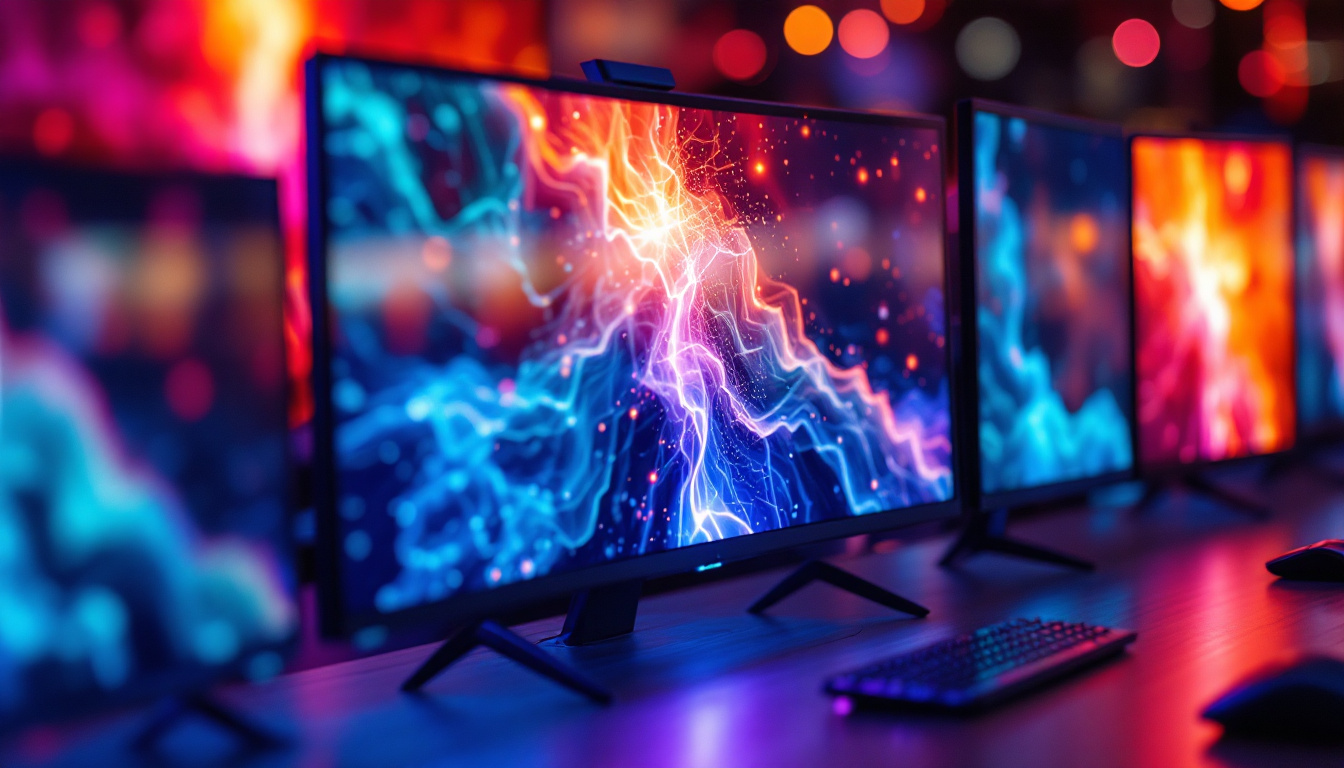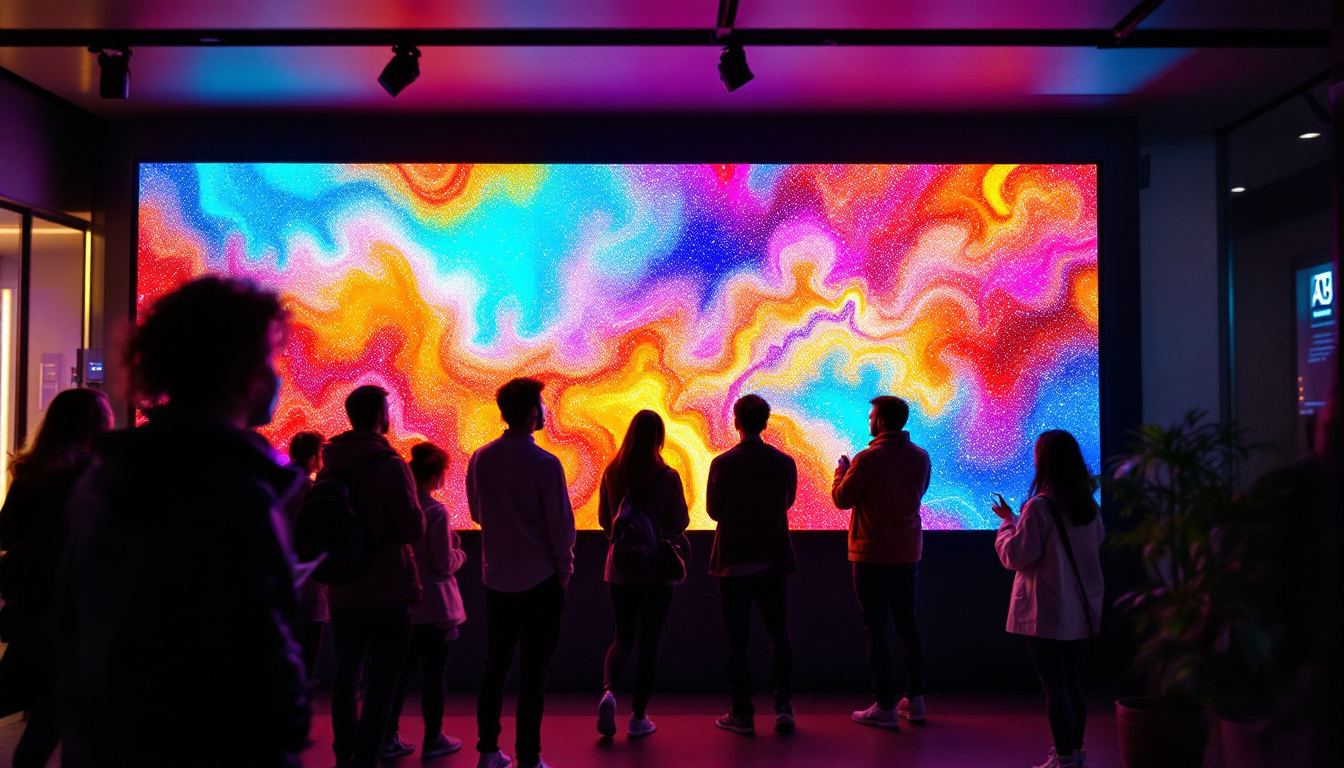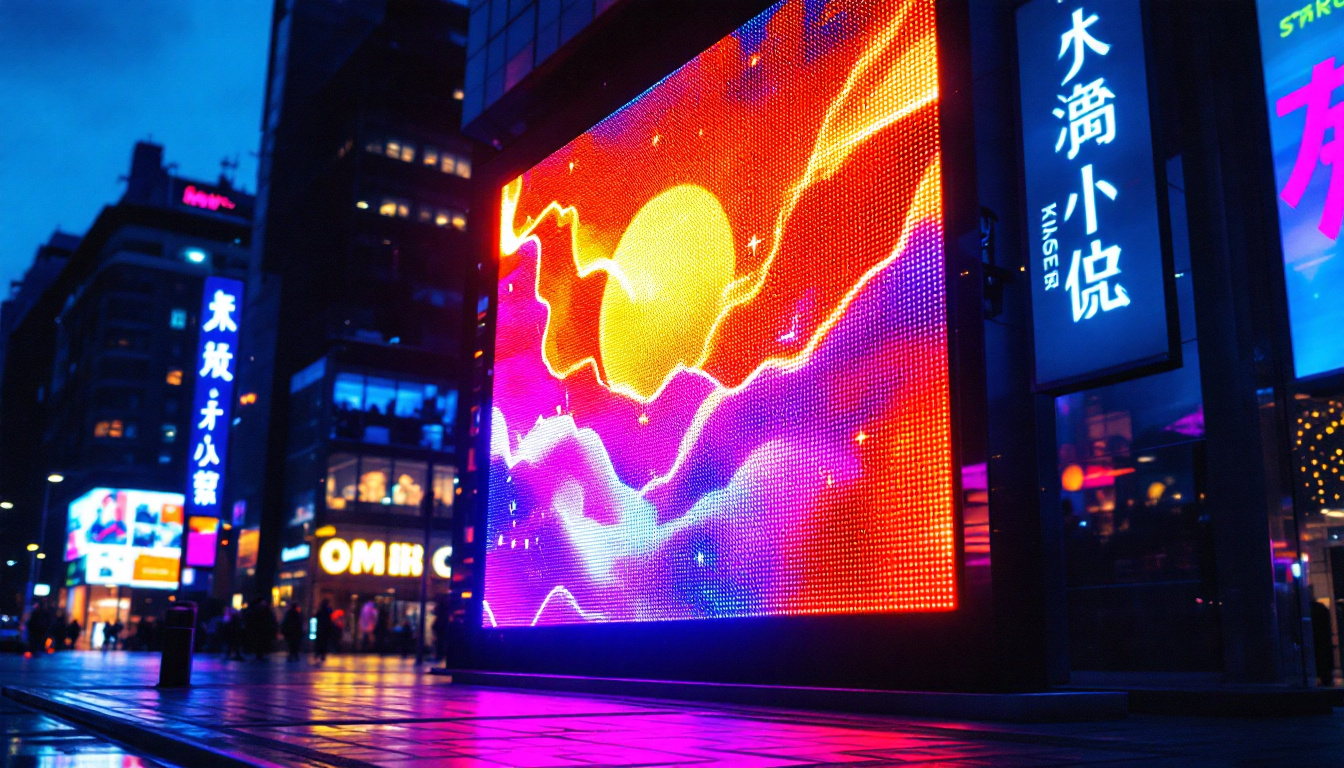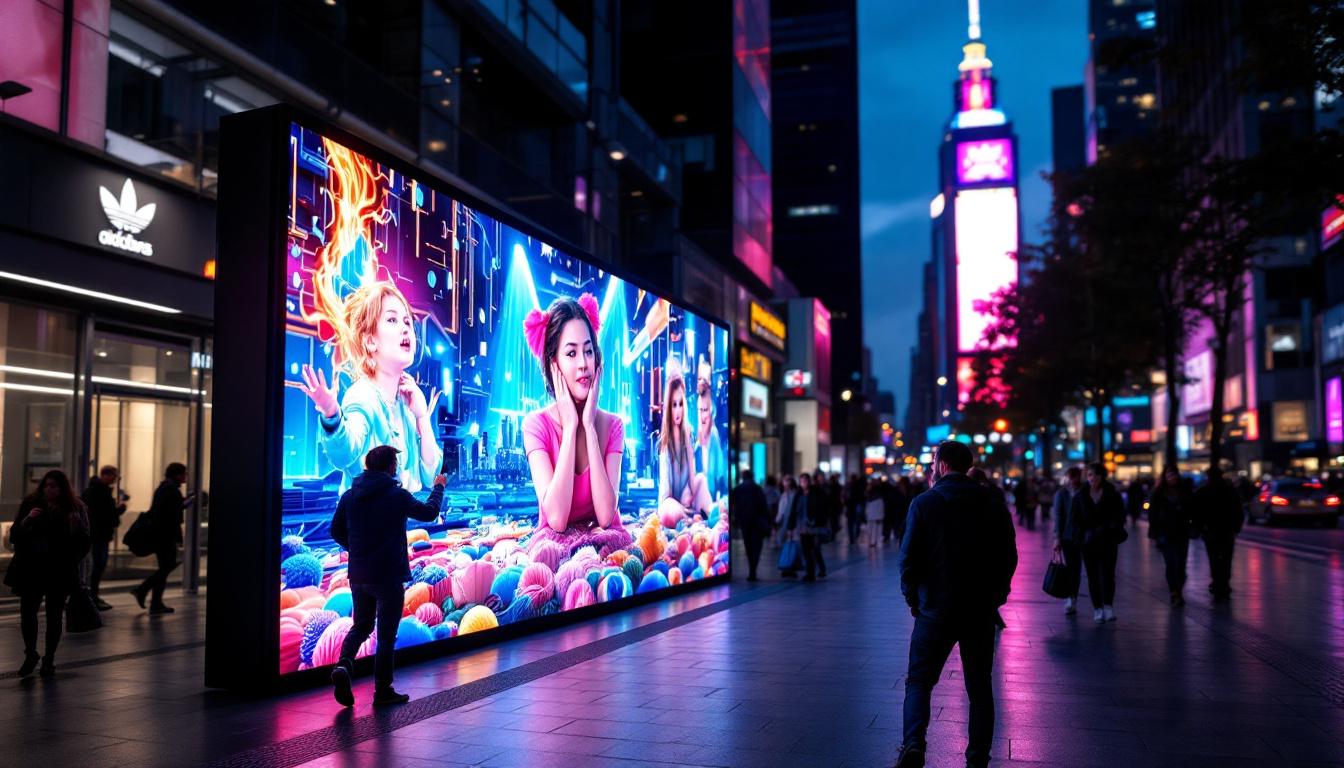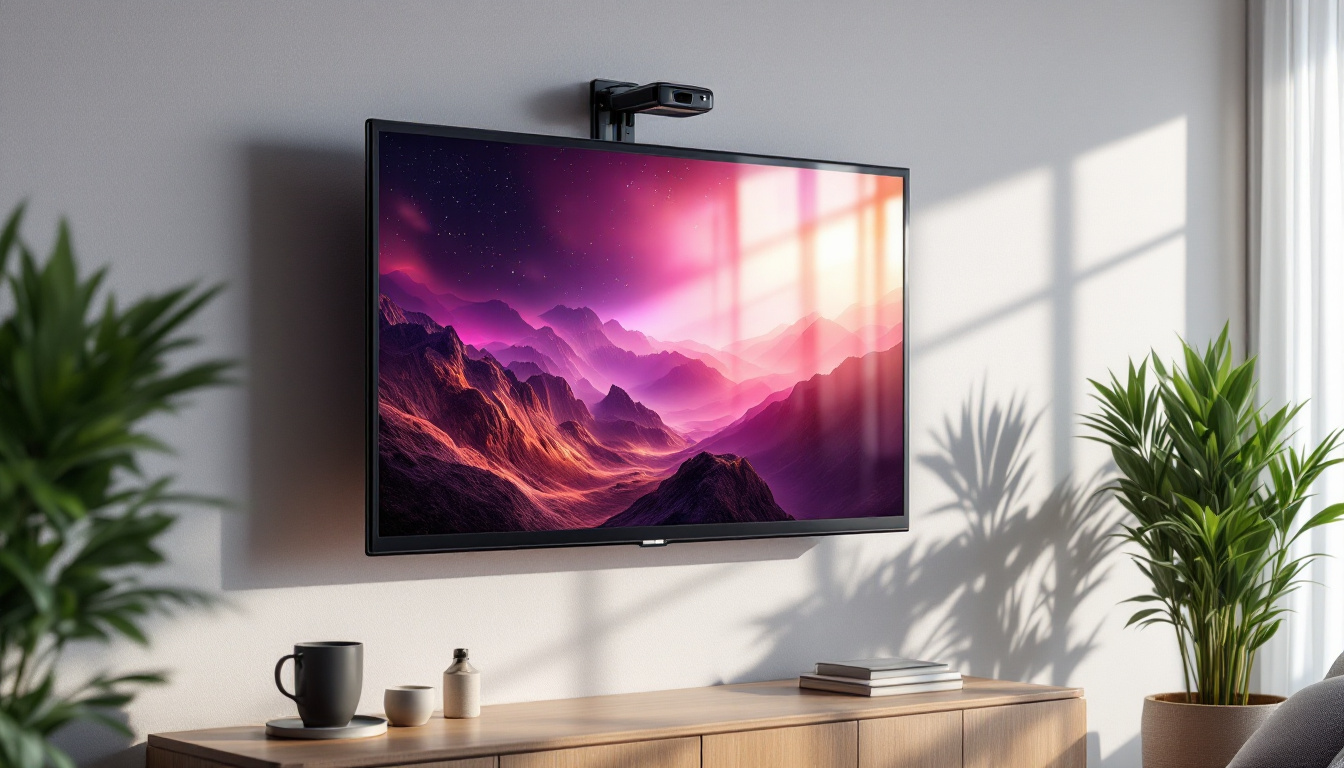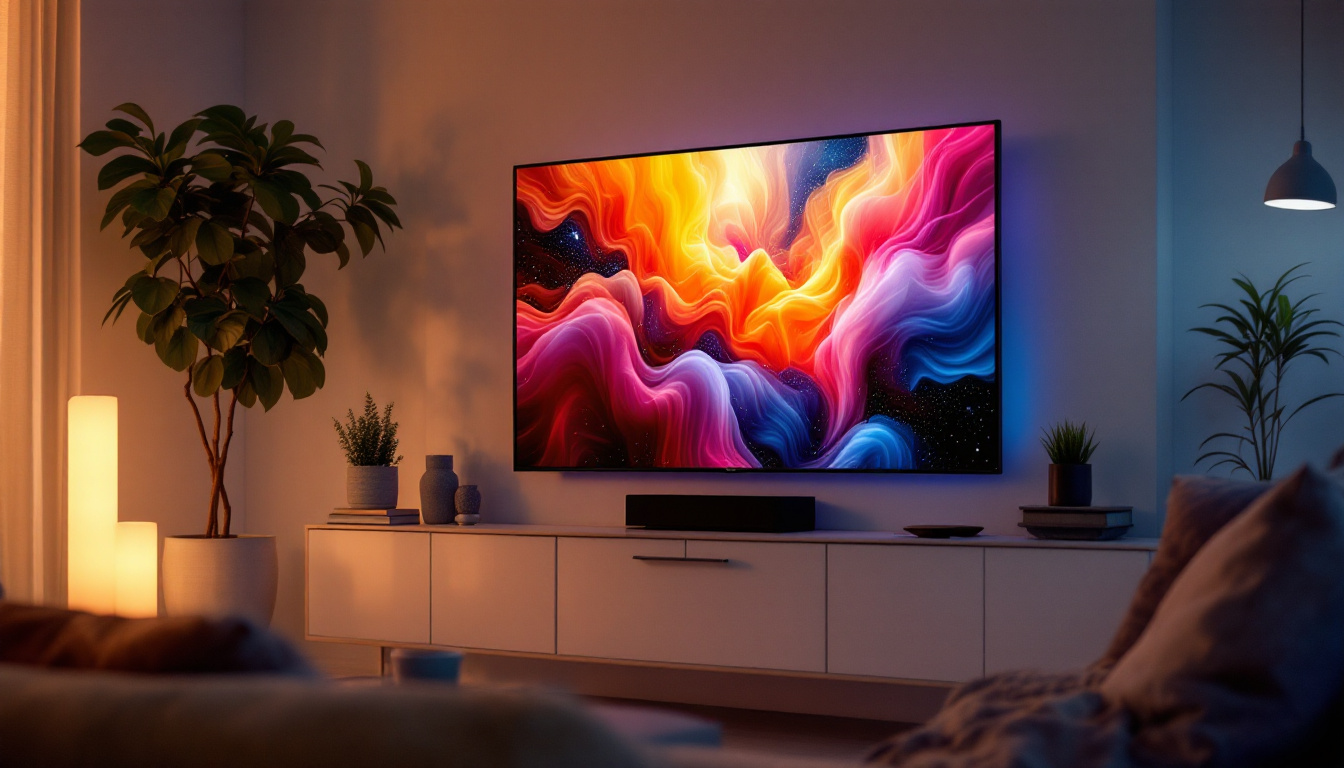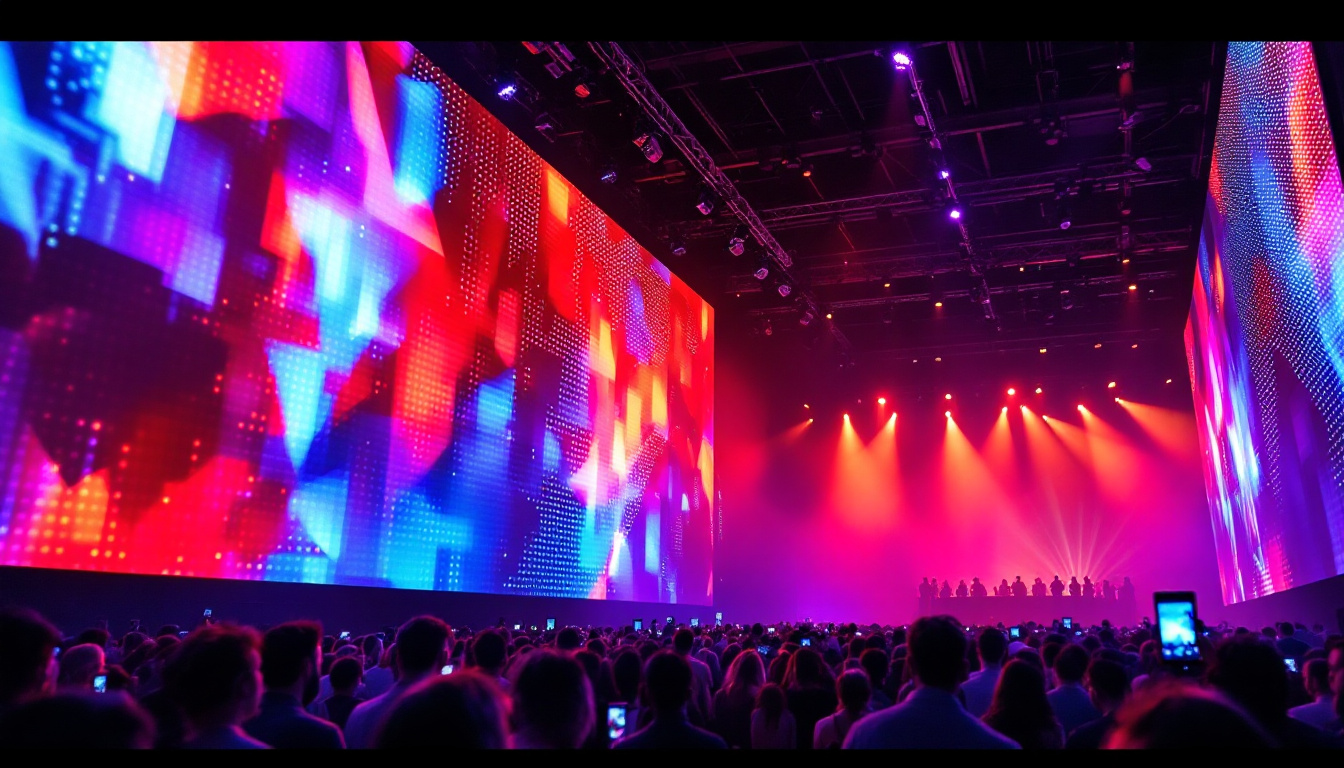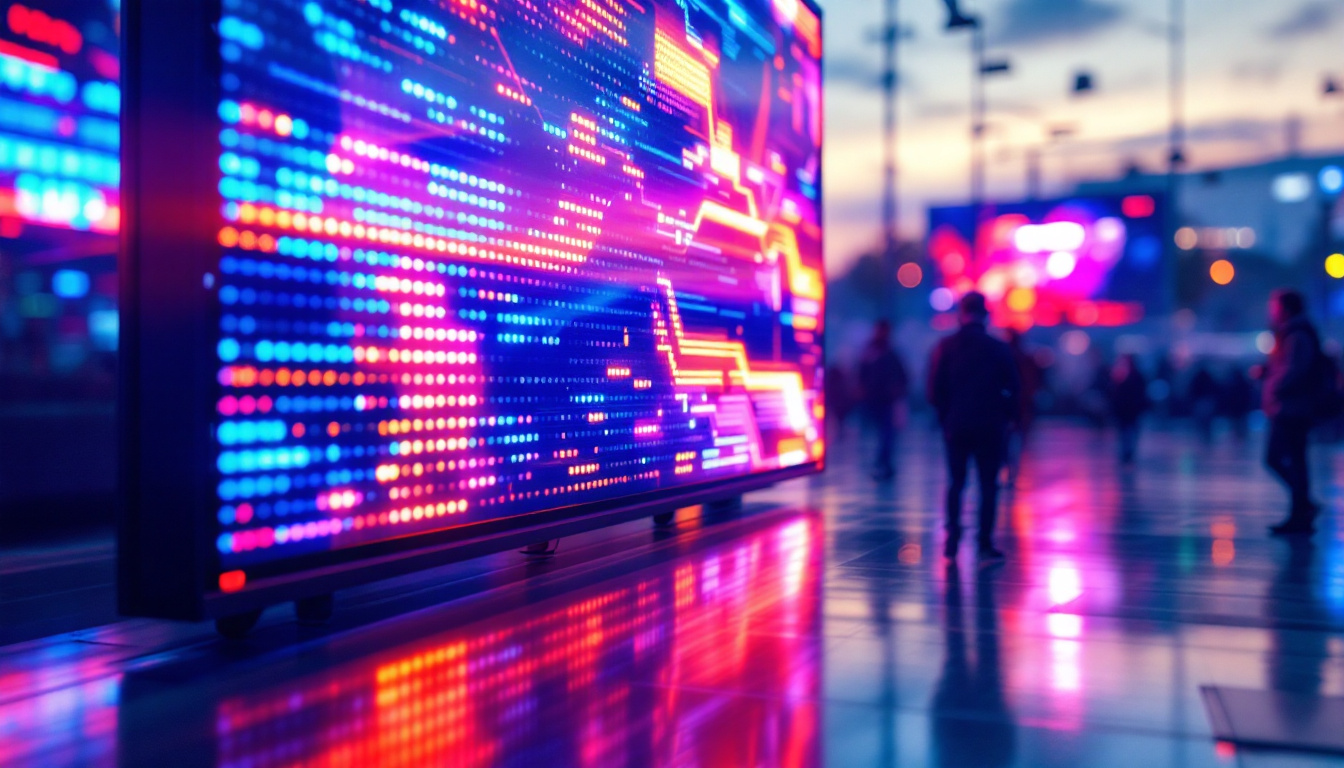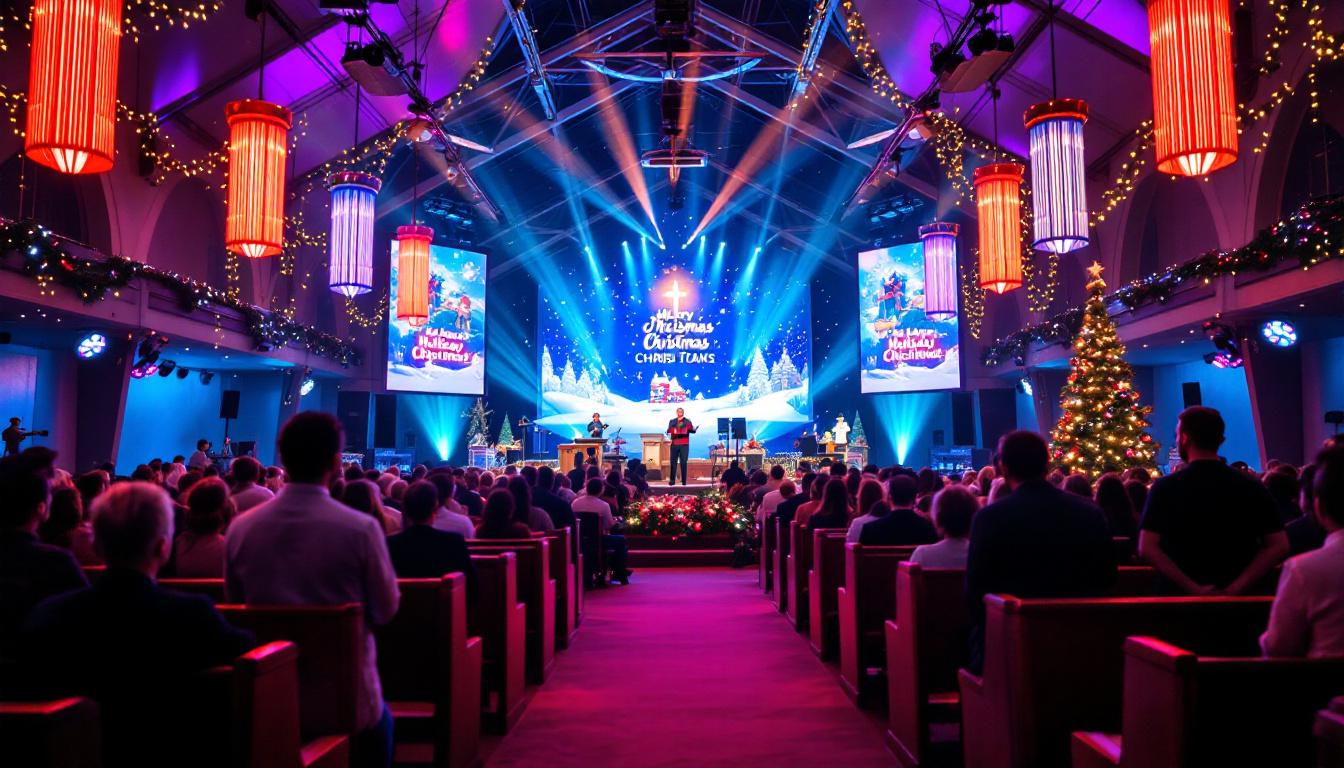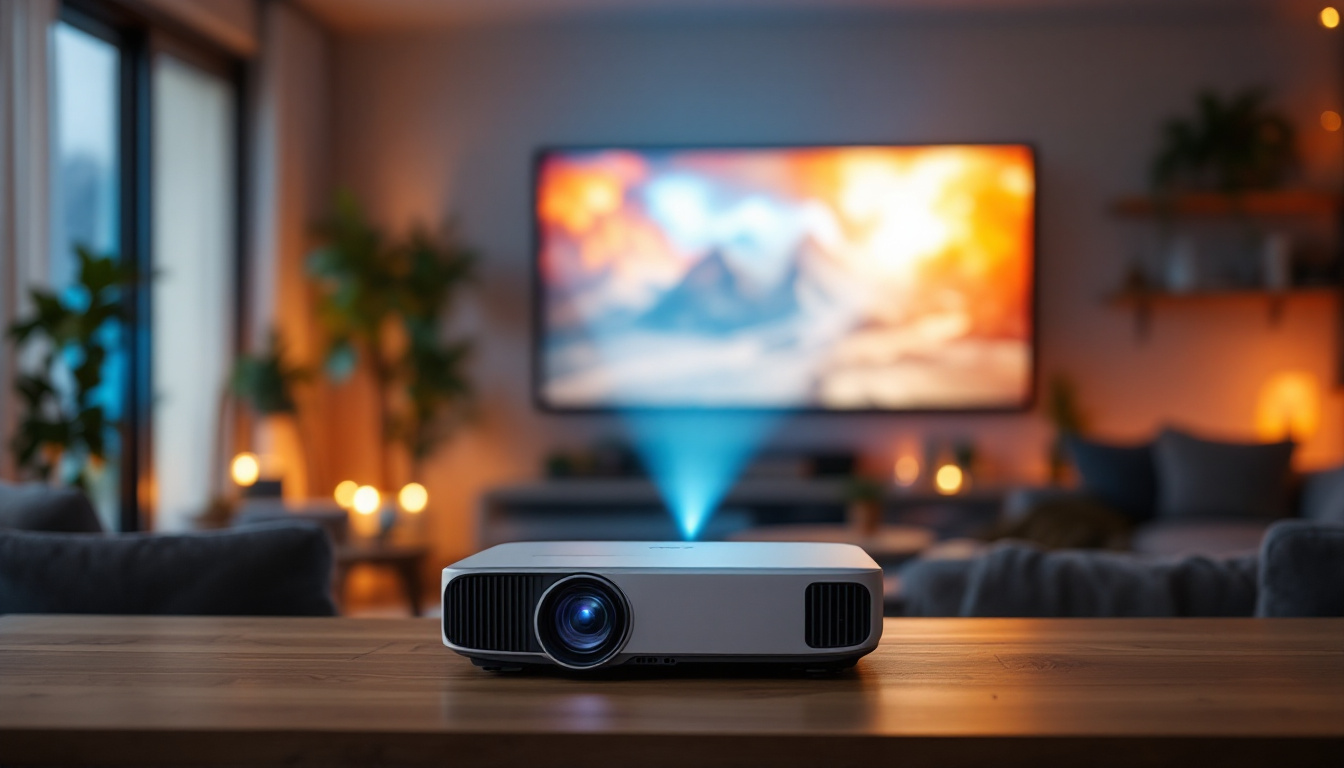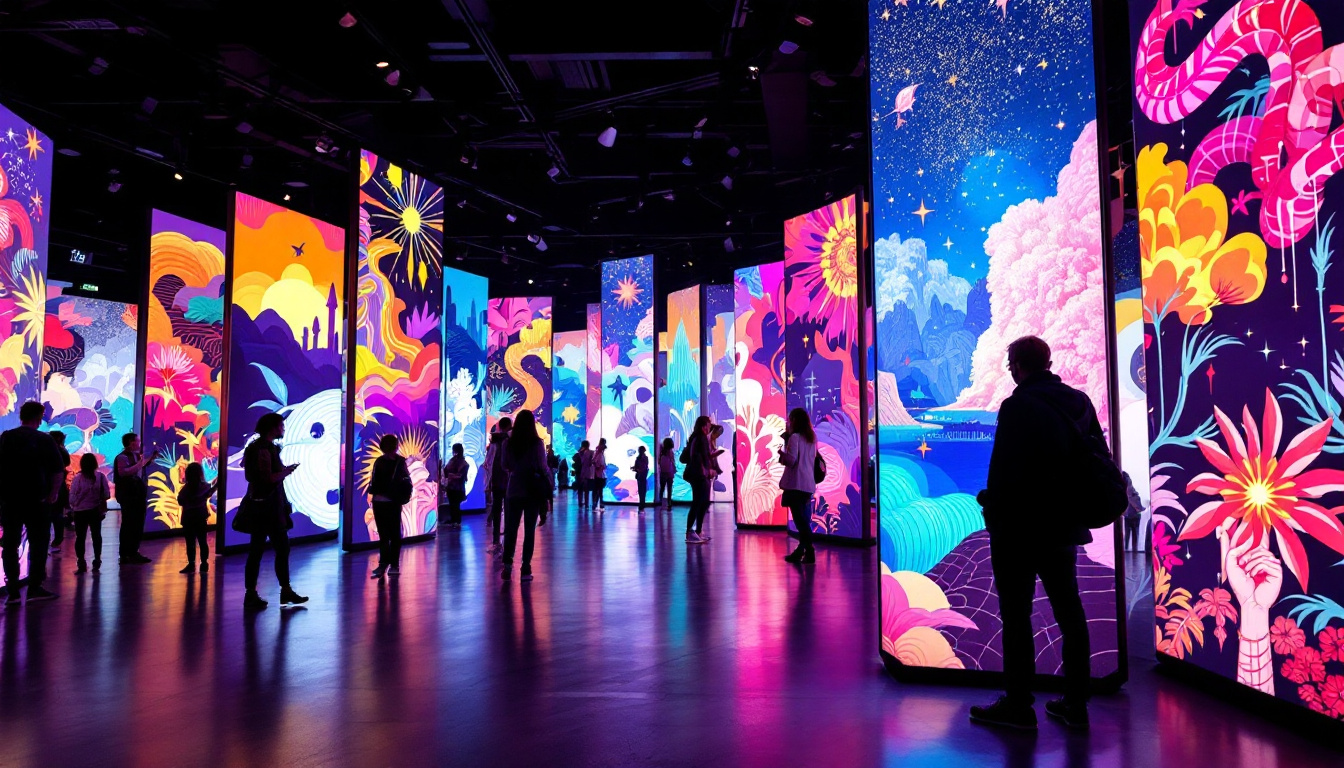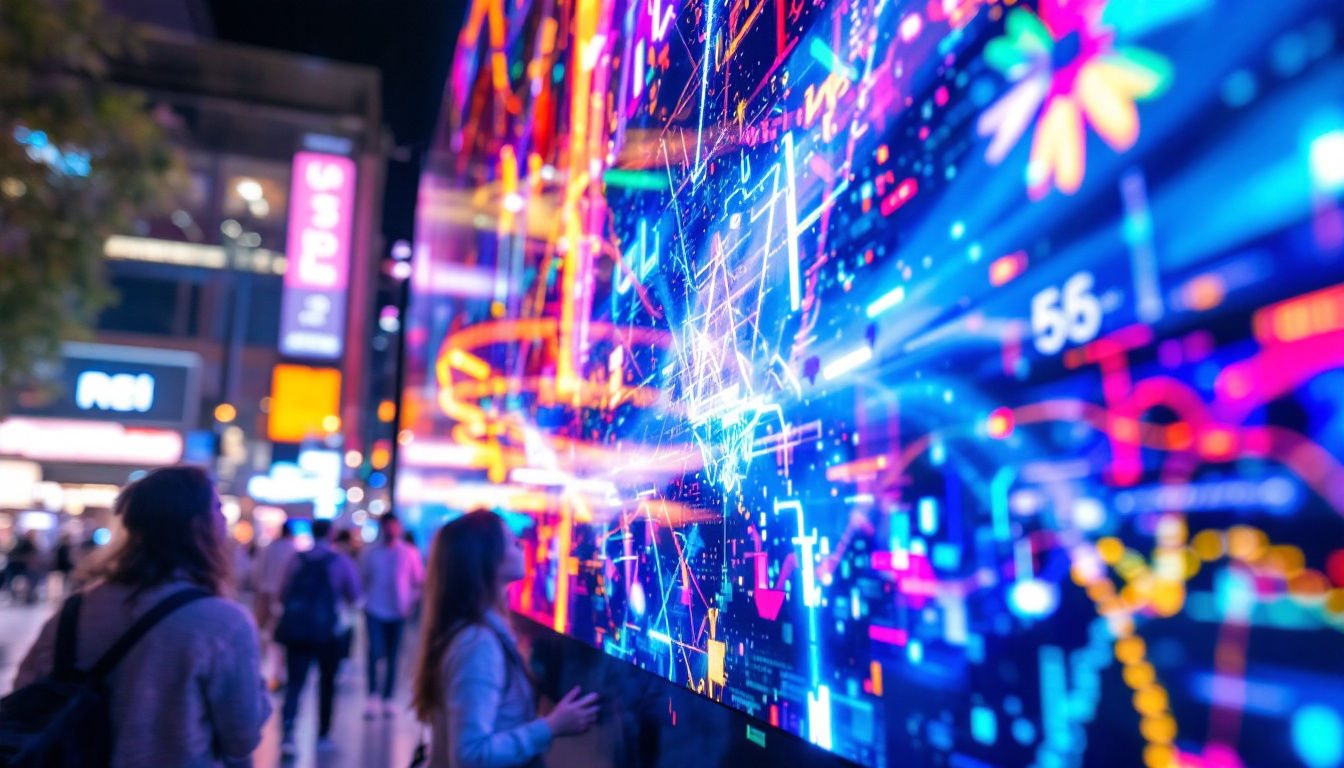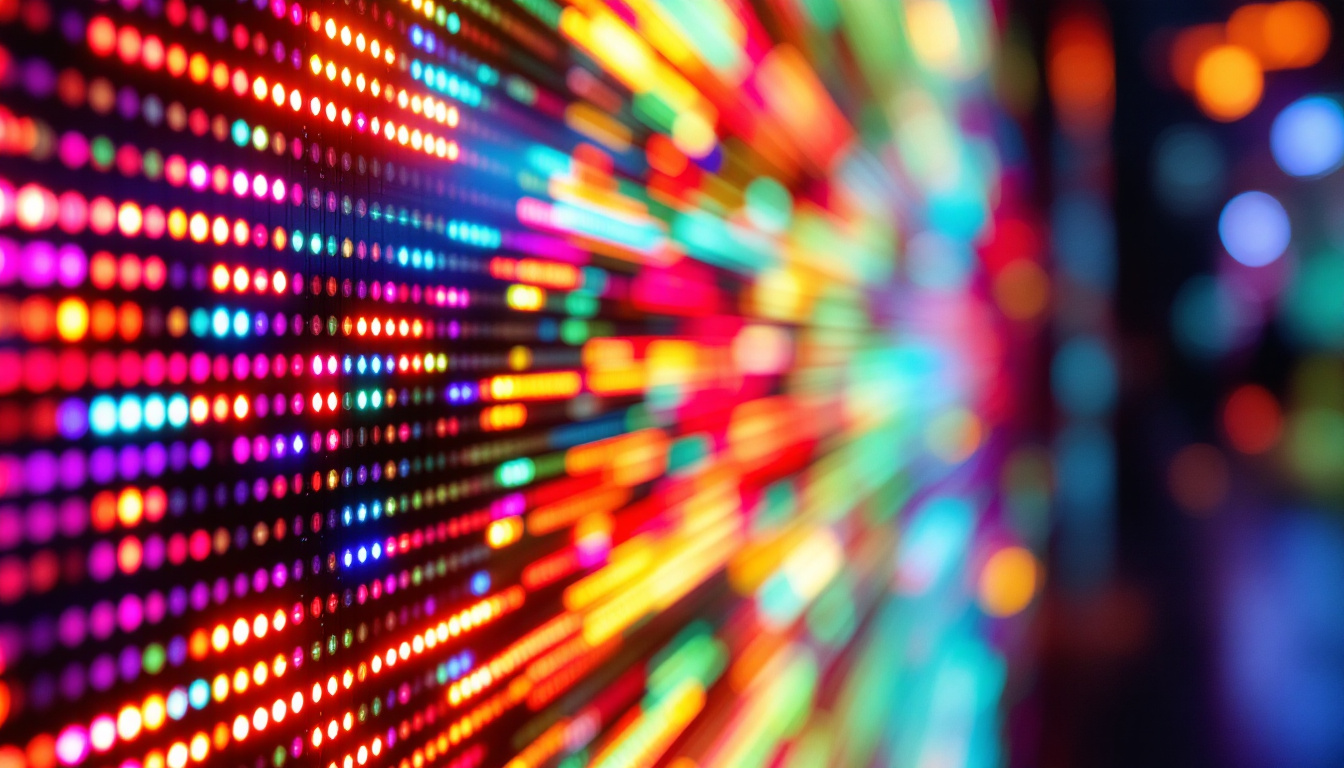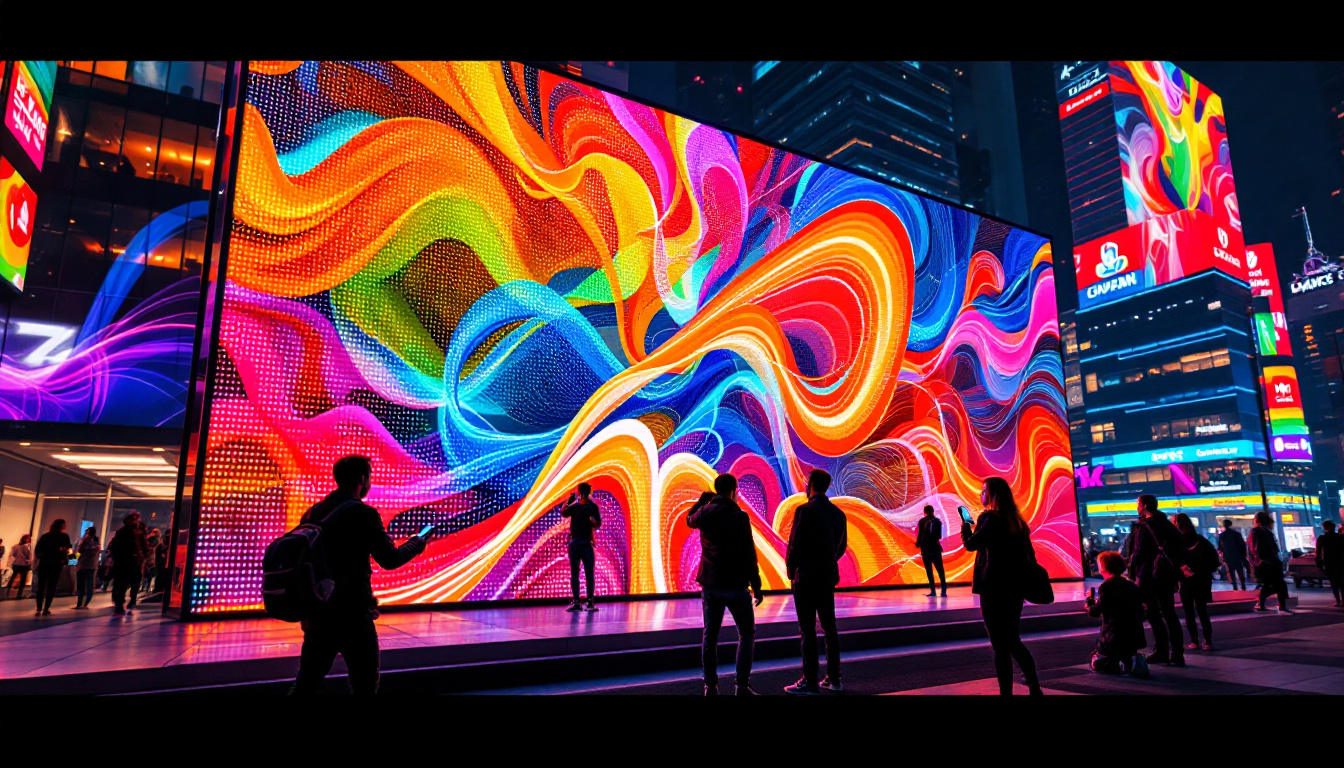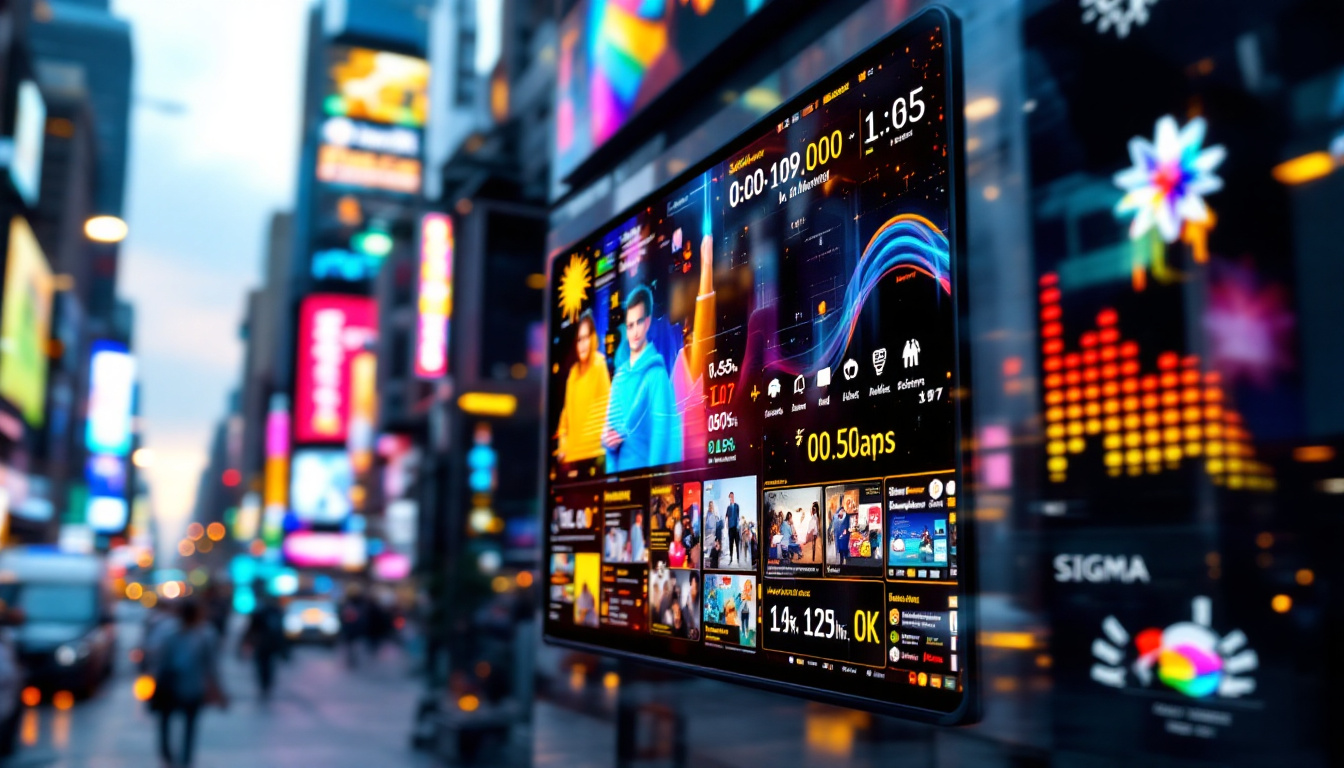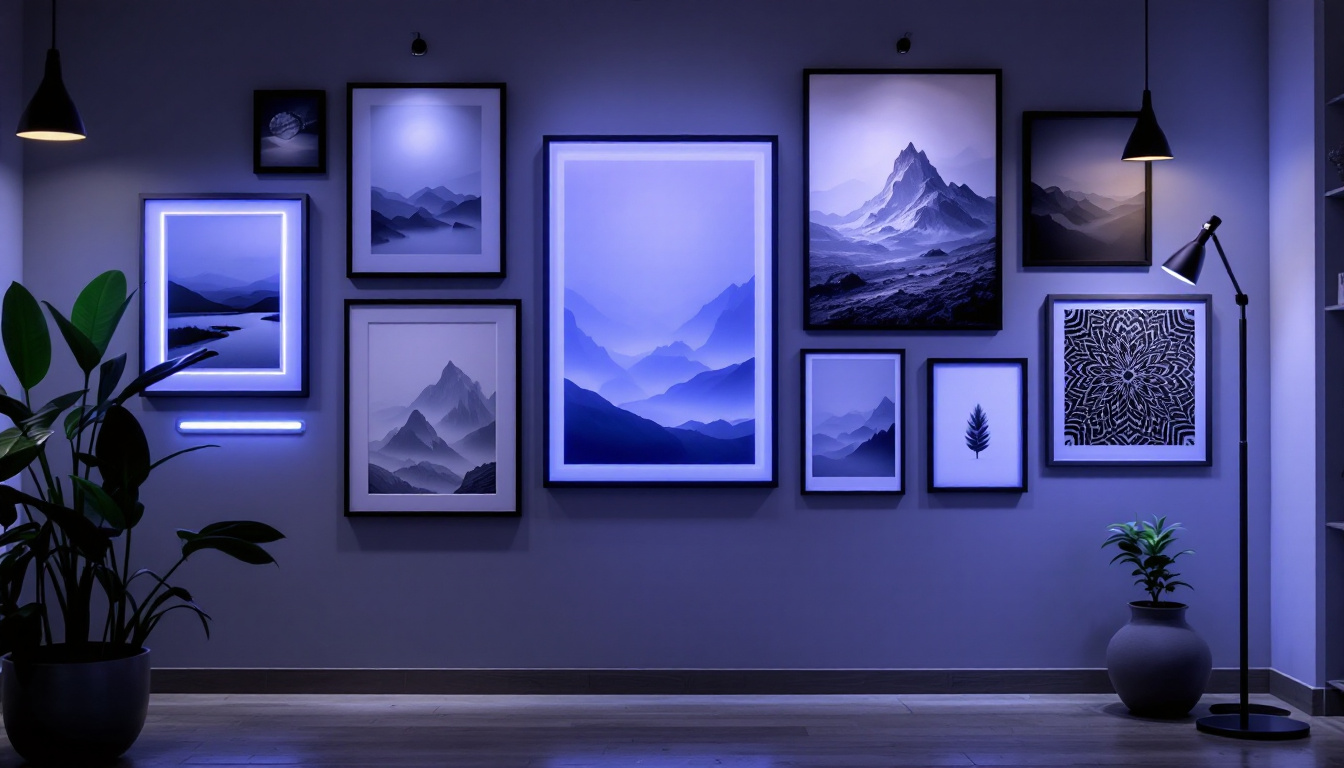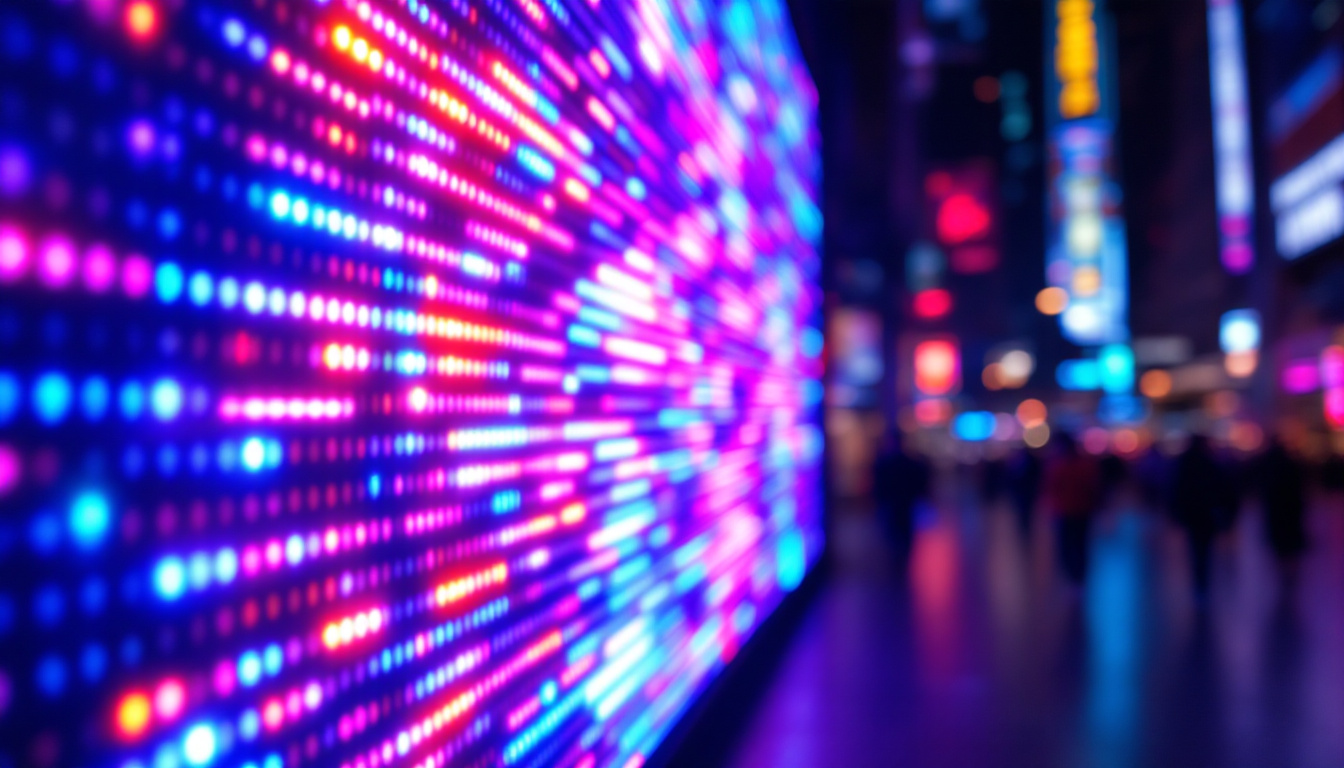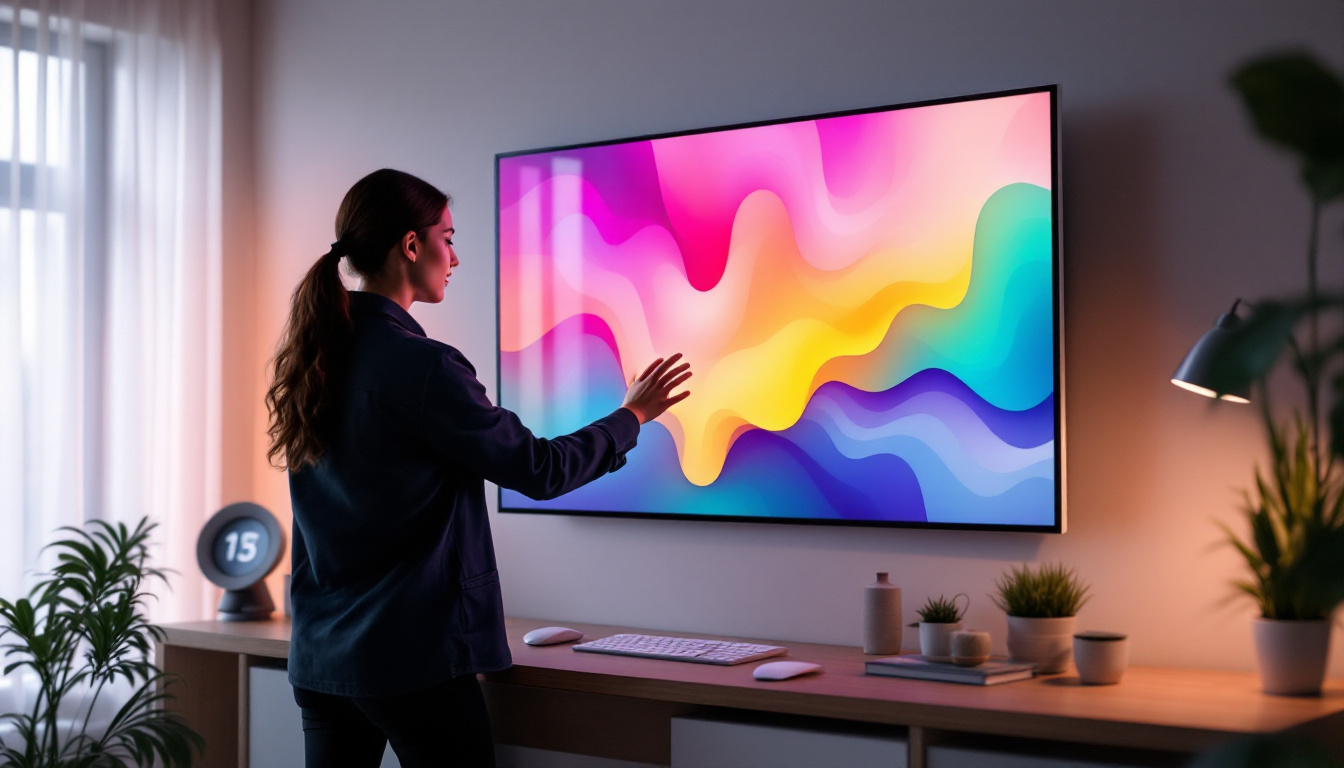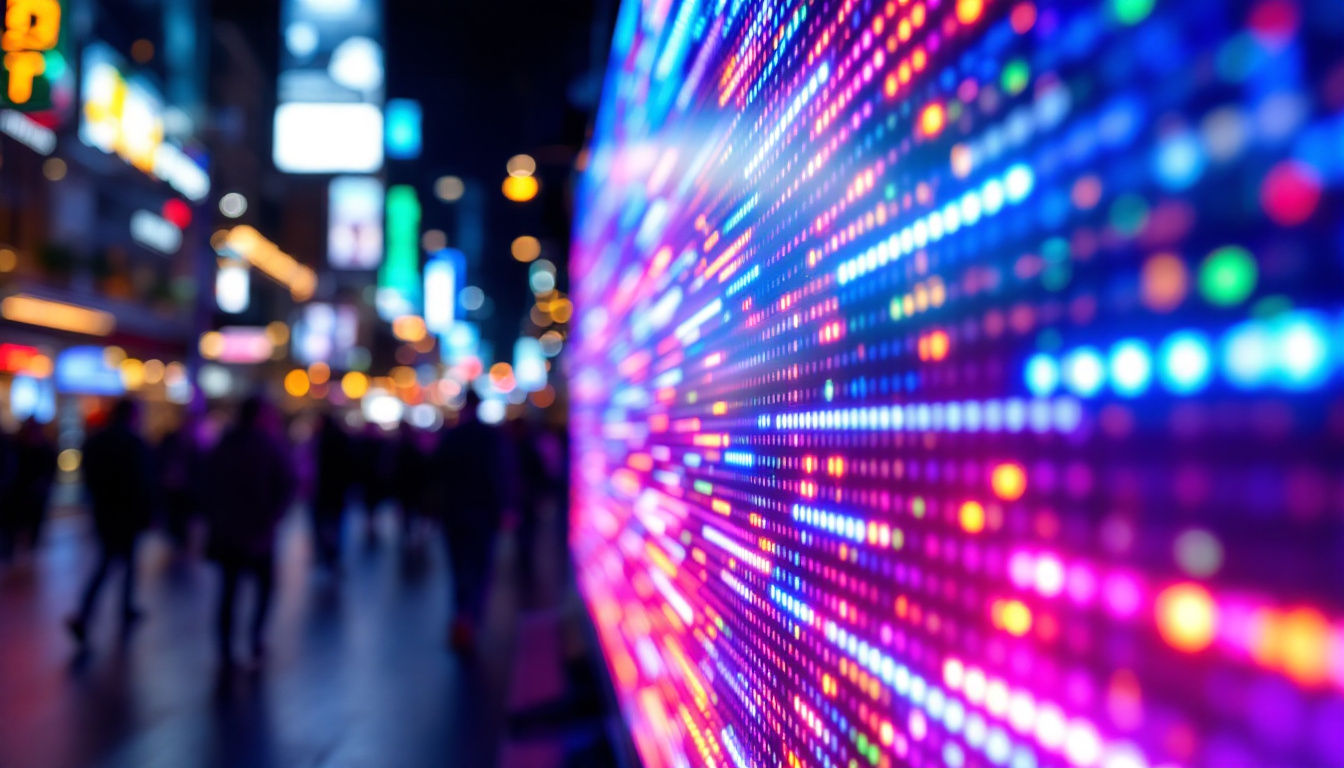In the rapidly evolving world of technology, LED displays have emerged as a pivotal component in various industries. From advertising to entertainment, these displays have transformed the way information is conveyed. This article delves into the intricacies of LED displays, exploring their functionality, advantages, and the leading companies in the market.
Understanding LED Displays
LED stands for Light Emitting Diode, a semiconductor device that emits light when an electric current passes through it. LED displays utilize this technology to produce vibrant images and videos, making them a popular choice for both indoor and outdoor applications. Their energy efficiency, longevity, and ability to produce bright colors even in direct sunlight have contributed to their widespread adoption in various industries, from advertising to entertainment.
How LED Displays Work
At the core of an LED display are numerous tiny diodes that work together to create a cohesive image. Each diode emits a specific color of light, typically red, green, or blue (RGB). By adjusting the intensity of these colors, a wide spectrum of hues can be produced, allowing for high-quality visuals. This color mixing is essential for rendering images accurately and vividly, which is why LED displays are often favored for applications requiring high visual fidelity.
The arrangement of these diodes can vary significantly. In some displays, they are grouped in clusters, while in others, they may be arranged in a grid pattern. This configuration affects the display’s resolution and overall image quality. Higher pixel density results in sharper images, making it crucial for applications where viewers are close to the screen, such as in retail environments or during live events. Additionally, advancements in technology have led to the development of finer pitch displays, which allow for even more detailed images and improved viewing experiences.
Types of LED Displays
LED displays can be categorized into several types, each designed for specific applications. The most common types include:
- Direct View LED Displays: These displays are made up of individual LED modules that are directly visible to the viewer. They are often used in large outdoor billboards and stadium screens, providing high brightness and visibility even in bright daylight.
- LED Video Walls: Comprising multiple LED panels, these walls create a large, seamless display ideal for concerts, events, and advertising. Their modular nature allows for flexibility in size and shape, making them suitable for various venues and creative installations.
- OLED Displays: Organic LED displays utilize organic compounds to emit light, offering superior contrast and color accuracy, making them popular in high-end televisions and smartphones. Unlike traditional LED displays, OLEDs can achieve true blacks by turning off individual pixels, resulting in stunning image quality.
In addition to these common types, there are also specialized LED displays designed for niche applications. For instance, transparent LED displays are gaining traction in retail environments, allowing for eye-catching advertising while maintaining visibility of the products behind the screen. Furthermore, flexible LED displays are being developed for innovative applications, such as curved screens or wearable technology, showcasing the versatility and potential of LED technology in the future.
Advantages of LED Displays
The popularity of LED displays can be attributed to several key advantages that set them apart from traditional display technologies.
Energy Efficiency
One of the most significant benefits of LED technology is its energy efficiency. LED displays consume considerably less power compared to older technologies such as LCD or CRT. This not only reduces operational costs but also contributes to a smaller carbon footprint, making LED displays an environmentally friendly option.
Brightness and Visibility
LED displays are known for their exceptional brightness levels, which make them easily visible even in direct sunlight. This characteristic is particularly advantageous for outdoor advertising and public information displays, where visibility is crucial. The high brightness also enhances the overall viewing experience in various lighting conditions.
Longevity and Durability
LED displays have a longer lifespan compared to traditional display technologies. With a lifespan of up to 100,000 hours, they require less frequent replacements, which can lead to significant cost savings over time. Additionally, LED displays are more resistant to shock and vibration, making them suitable for a wide range of environments.
Key Applications of LED Displays
LED displays have found applications across numerous sectors, each leveraging the technology to enhance communication and engagement.
Advertising and Marketing
In the advertising industry, LED displays have revolutionized how brands communicate with consumers. Dynamic content can be easily updated, allowing for real-time promotions and announcements. The ability to display vibrant visuals captures attention more effectively than static billboards, leading to higher engagement rates.
Entertainment Venues
Concerts, sports events, and theaters have embraced LED technology to create immersive experiences for audiences. Large LED screens provide high-definition visuals that enhance performances, making every event more memorable. Additionally, LED technology allows for creative stage designs, integrating visuals seamlessly with live action.
Transportation and Public Information
LED displays are widely used in transportation hubs such as airports and train stations for displaying real-time information. Flight schedules, train arrivals, and other critical updates can be communicated effectively, ensuring passengers are well-informed. The reliability and clarity of LED displays are essential in these high-traffic environments.
Choosing the Right LED Display
Selecting the right LED display for a specific application involves several considerations. Factors such as resolution, size, and intended use play a crucial role in making an informed decision.
Resolution and Pixel Pitch
Resolution is a critical factor in determining the quality of an LED display. It refers to the number of pixels that make up the display, with higher resolutions providing clearer images. Pixel pitch, the distance between the centers of two adjacent pixels, also affects image quality. A smaller pixel pitch results in higher resolution and is ideal for close viewing distances.
Size and Configuration
The size of the LED display should align with the intended application. For large outdoor billboards, a massive display may be necessary to attract attention from afar. In contrast, smaller displays are suitable for indoor environments where viewers are closer to the screen. Additionally, the configuration of the display, whether it be a single unit or a modular setup, should be considered based on the installation space.
Budget and Installation
Budget constraints are a reality for many organizations. It’s essential to balance quality and cost when selecting an LED display. Installation costs can also vary significantly based on the complexity of the setup, so it’s advisable to factor these into the overall budget. Consulting with professionals can help ensure that the chosen display meets both financial and functional requirements.
The Leading LED Companies in the Market
The LED display market is populated with numerous companies, each offering unique products and services. Some of the leading companies have established themselves as industry leaders through innovation and quality.
Samsung
Samsung is a global leader in display technology, renowned for its cutting-edge LED solutions. The company offers a wide range of products, from small-scale displays to massive video walls. Samsung’s commitment to quality and innovation has made it a preferred choice for many businesses looking to invest in LED technology.
LG Electronics
Another major player in the LED market is LG Electronics. Known for its OLED technology, LG also provides a variety of LED display solutions suitable for different applications. Their displays are characterized by vibrant colors and high contrast, making them ideal for both commercial and residential use.
Barco
Barco specializes in high-performance visual display solutions, including LED technology. The company focuses on providing innovative products for professional markets, such as broadcasting, events, and control rooms. Barco’s commitment to quality and reliability has earned it a strong reputation in the industry.
Future Trends in LED Display Technology
The LED display industry is continuously evolving, with several trends shaping its future. Understanding these trends can provide insights into what to expect in the coming years.
Advancements in MicroLED Technology
MicroLED technology is gaining traction as a next-generation display solution. Unlike traditional LED displays, MicroLEDs utilize tiny individual LEDs to create images. This technology offers superior brightness, contrast, and energy efficiency, making it a promising option for future displays.
Integration with Smart Technology
The integration of LED displays with smart technology is another trend to watch. As the Internet of Things (IoT) continues to expand, LED displays are becoming more connected and interactive. This allows for real-time data display and enhanced user engagement, particularly in advertising and public information sectors.
Sustainability Initiatives
With growing concerns about environmental impact, many companies are focusing on sustainability in LED display manufacturing. This includes using eco-friendly materials, improving energy efficiency, and implementing recycling programs. As consumers become more environmentally conscious, the demand for sustainable display solutions is expected to rise.
Conclusion
LED displays have revolutionized the way information is presented and consumed across various industries. Their energy efficiency, durability, and vibrant visuals make them an ideal choice for a multitude of applications, from advertising to public information. As technology continues to advance, the future of LED displays looks promising, with innovations such as MicroLED and smart integration on the horizon.
Choosing the right LED display involves careful consideration of factors such as resolution, size, and budget. By understanding the market and the leading companies, businesses can make informed decisions that align with their needs and objectives. As the industry evolves, staying updated on trends and advancements will be crucial for leveraging the full potential of LED display technology.
Illuminate Your Space with LumenMatrix
Ready to elevate your visual communication with unparalleled clarity and vibrancy? Discover LumenMatrix’s innovative LED display solutions, where cutting-edge technology meets creative design. Whether you need an Indoor LED Wall Display for your retail space, an Outdoor LED Wall Display for impactful advertising, or any of our specialized options like Vehicle, Sports, or Floor LED Displays, LumenMatrix has you covered. Embrace the future of digital signage with our Custom, All-in-One, and LED Transparent Displays, and let your brand shine like never before. Check out LumenMatrix LED Display Solutions today and transform your message into a captivating visual experience.

